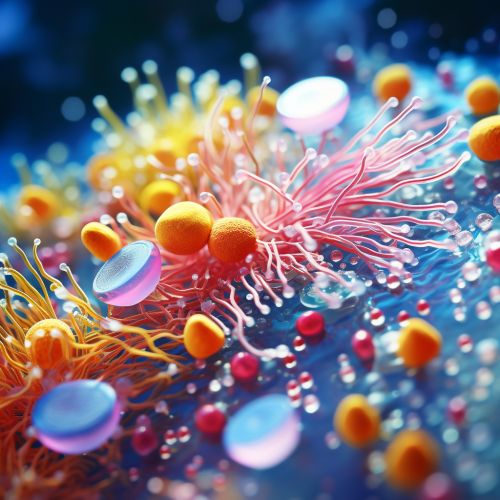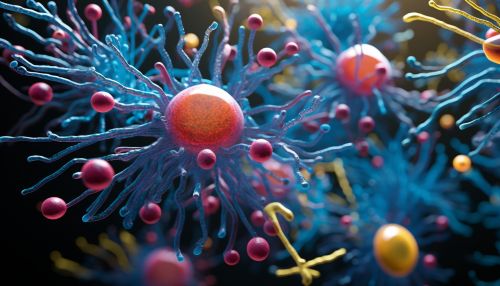Bacterial cell structure
Introduction
Bacterial cell structure is a fundamental topic in microbiology, which is the study of microscopic organisms, including bacteria. Bacteria are single-celled prokaryotic organisms that are characterized by their simple cellular organization. Unlike eukaryotic cells, bacterial cells do not have a nucleus or other membrane-bound organelles. Instead, their genetic material is contained within a single, circular molecule of DNA located in the nucleoid region of the cell.


Cell Wall
One of the defining features of bacterial cells is their cell wall, which provides structural support and protection. The cell wall is composed of a unique substance called peptidoglycan, a polymer of sugars and amino acids. The structure and composition of the cell wall can vary between different types of bacteria, leading to the classification of bacteria into two major groups: Gram-positive and Gram-negative, based on their reaction to the Gram stain.
Cell Membrane
Beneath the cell wall is the cell membrane, also known as the plasma membrane. This is a lipid bilayer that controls the movement of substances into and out of the cell. The cell membrane also contains proteins that perform various functions, such as transport of nutrients, waste removal, and signal transduction.
Cytoplasm
The cytoplasm of a bacterial cell is a gel-like substance that fills the interior of the cell. It contains all the cell's metabolic machinery, including enzymes for biochemical reactions, ribosomes for protein synthesis, and various other molecules and ions necessary for cell function.
Nucleoid
The nucleoid is the region of the bacterial cell where the DNA is located. Unlike eukaryotic cells, bacteria do not have a membrane-bound nucleus. Instead, their DNA is a single, circular molecule that is free-floating in the cytoplasm.
Plasmids
In addition to the main chromosome, many bacteria also contain small, circular pieces of DNA known as plasmids. These plasmids often carry genes that provide the bacteria with some form of selective advantage, such as antibiotic resistance.
Ribosomes
Ribosomes are the sites of protein synthesis in the bacterial cell. Bacterial ribosomes are smaller than eukaryotic ribosomes and have a different structure, which makes them a target for certain types of antibiotics.
Other Structures
Many bacteria also have additional structures that aid in their survival and function. These can include flagella for movement, pili for attachment to surfaces, and capsules for protection against the host's immune system.
Conclusion
Understanding the structure of bacterial cells is essential for studying their biology and for developing strategies to combat bacterial diseases. The simplicity and diversity of bacterial cell structures also make them ideal models for studying basic biological processes.
